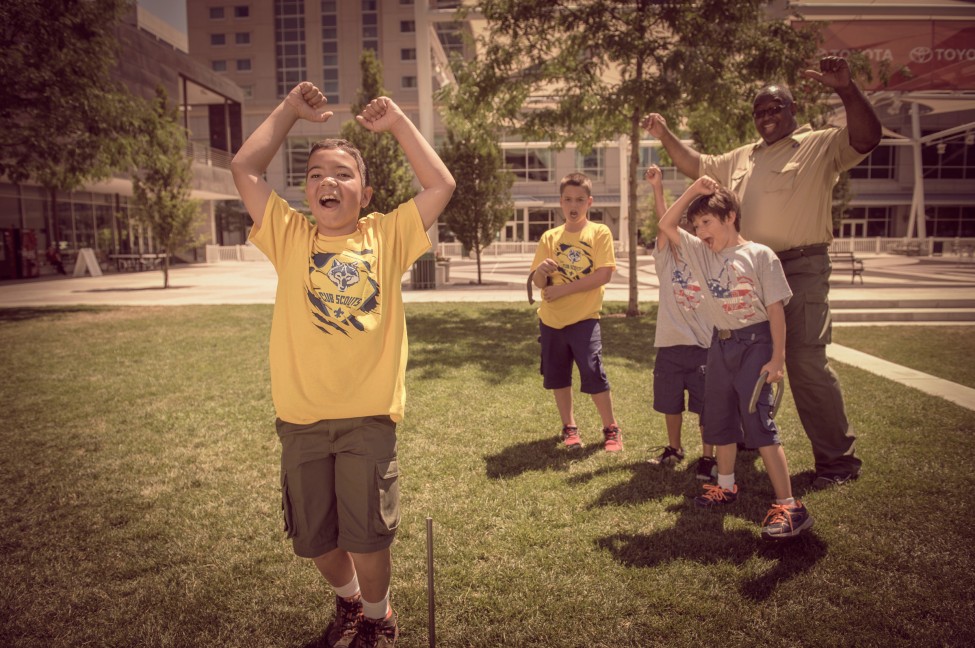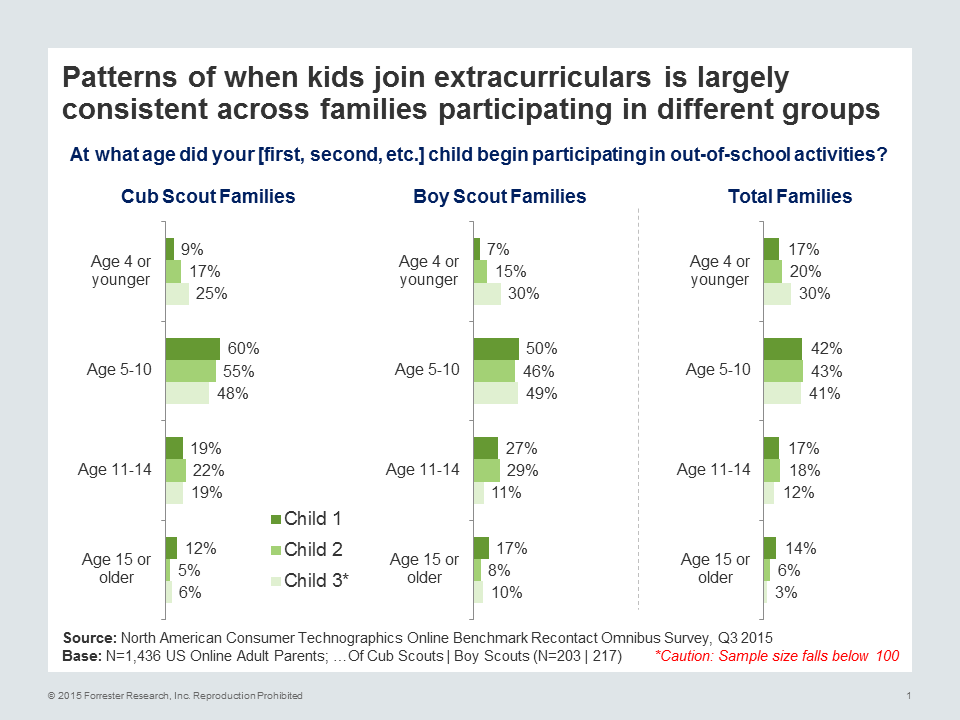
Ask the Expert: Can Scouting and Sports Coexist?
Who’s too busy? You and your family, that’s for sure – running from work to school, having family time, shopping for food or clothes and add in an occasional movie or visit with friends each week…your calendar is already full. Now let’s add an after-school activity!
Popular After-School Activities
Parents have some influence over which activities are appropriate for their children. In a recent survey, parents of boys age seven to 12 reported that youth sports (40%), church groups (29%) and after-school STEM programs (18%) were most popular. However, Cub Scouts (15%) and Boy Scouts (15%) measured the same or higher than all other activities in the survey: gymnastics (15%), cheerleading (10%), 4H club (7%), CampFire (6%), and Girls Inc (5%). (Forrester Research, Consumer Technographics Online Benchmark Recontact Omnibus Survey, Q3 2015. 733 US Online adults (online at least weekly) who are parents of boys age 7-12)
With a wide variety of choices available, Scouting is a valuable part of any young person’s after-school schedule.
Yet, team sports participation is trending downward. In fact, a five-year period starting in 2009 indicated youth sports activity is down 3.7%, reflecting fewer participants and fewer sports per person. Some of the reasons cited include “lack of entry level or casual play available at public schools, combined with an emphasis on the most elite and scholarship-earning athletes in club programs.” (Sports & Fitness Industry Association, 2015 US Trends in Team Sports. Survey of 5,067 individuals and 5,711 households during January and February 2015).
Scouting Is Compatible with Youth Sports
As noted in the Tufts University Character and Merit Project (June, 2015), character traits of Scouts and non-Scouts were compared over a two-and-a-half-year period. Youth who participate in Scouting and youth sports are more likely to embrace prosocial values such as ‘helping others’ or ‘doing the right thing’ than youth who only play sports. In addition, six character traits showed measurable increase compared to non-Scouts. This independent study endorses the value of Scouting. Read the Scouting Wire article on this study and check out some resources to help your council promote the study.
Competing for the Attention of Our Youth
Scouting and youth sports are competing with video games and other distractions. A report from the Robert Wood Johnson Foundation and Harvard asked parents of children who play sports the main reasons why they find it difficult for their child to continue participating. “Among parents whose middle or high school aged child currently plays sports, the most frequently mentioned factor is that their child would rather spend time on the phone, computer, video games, or TV (34%). Other frequently mentioned reasons include that playing a sport interferes with schoolwork (25%), and it costs too much (22%).” (Sports and Health in America, June 2015)
The Harvard report revealed why youth are choosing digital distractions over sports, but it is fair to assume Scouting, after-school activities, drama, and music are impacted as well.
Age to Start After-School Activities
Another independent research report by Don Sabo, a longtime youth sports researcher and a professor at D’Youville College in Buffalo, N.Y., questioned 2,185 students eight to 17-years-old and learned 75% of the boys and 69% of girls participated in organized sports during the previous year. The mean average age of first participation was relatively young – 6.8 for boys and 7.4 for girls. The Harvard Sports and Health report cited above reports that 41% of youth play sports year round and a majority 58% play sports only during a particular season. Parents, help your child make informed choices!
Finally, Forrester Research surveyed over 10,000 parents and asked at what age did their child first participate in out-of-school activities like Scouting, sports or music programs. A majority, 60% said activity started between age five and 10 for the first child. Nine percent started at age four or younger. Almost double that number amount, 17% of second children and 25% of third children started participating at age four or younger. For complete details, see the chart below:
Thanks for your support of the Scouting movement. If you have interesting ideas for the Market Intelligence “Ask the Expert” blog please reply in the comment section or send a note to Scott.olson@scouting.org.




